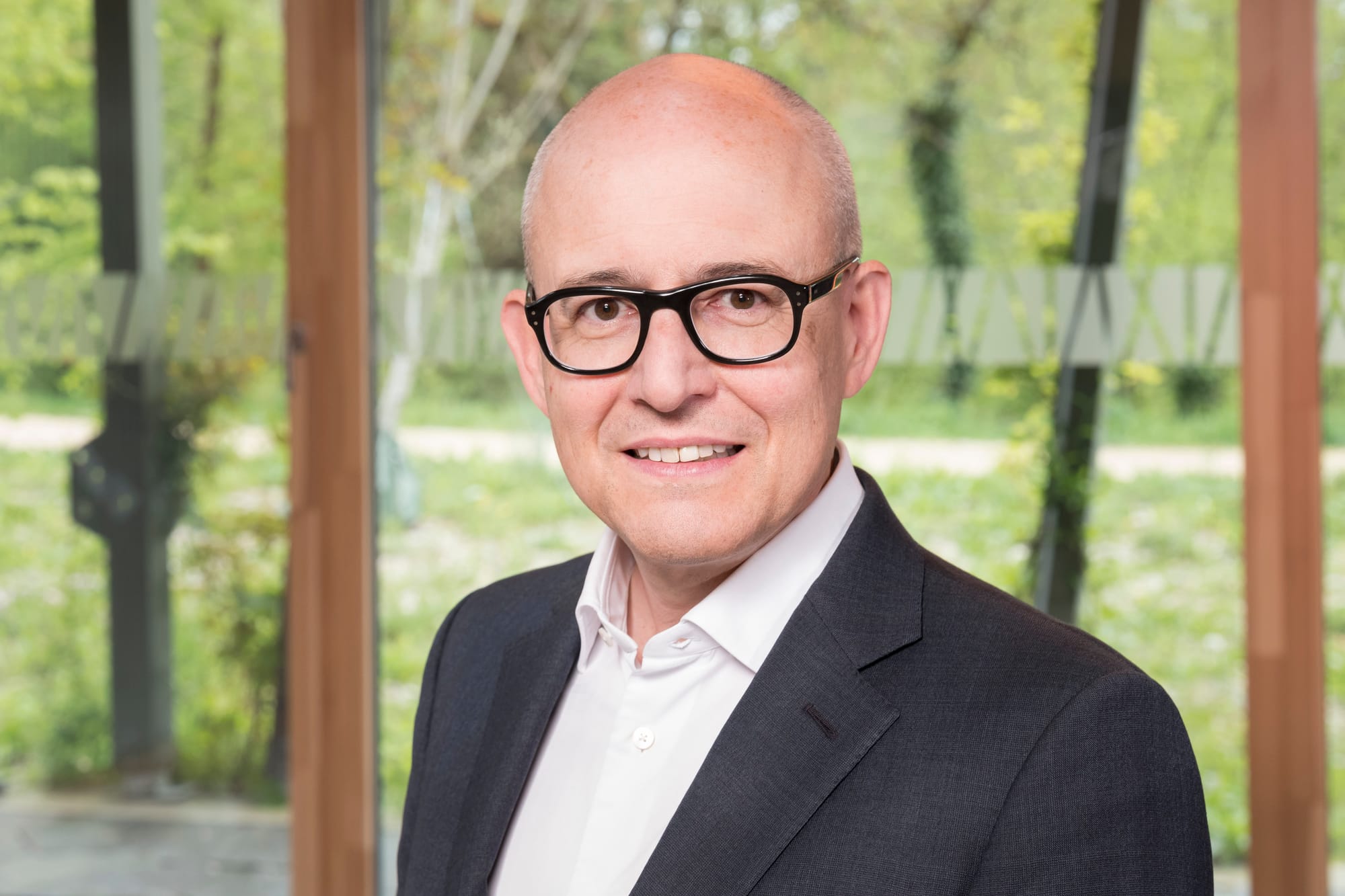Since its launch, "Building Bridges" has established itself as Geneva's reference summit on sustainable finance, bringing together public and private actors, investors, NGOs and international institutions. Each edition underscores the urgency — and the opportunity — of aligning global financial flows with environmental, social and climate issues.
The 2025 edition, which will be held from 30 September to 2 October in Geneva, comes at a pivotal moment. The commitments announced by major financial institutions have not lasted long, weakened notably by counterproductive political and legal pressures. The setbacks and departures observed within the "Net-Zero Banking Alliance" (NZBA) illustrate this dismay.
Yet, in a context still marked by the climate emergency and energy challenges, how can a clear course — a new lease on life — be given to sustainable finance? And what role could Switzerland play in this reconstruction? We discuss this with Karen Hitschke, CEO of Building Bridges.
Overall, we are living in a period where bridges break more than they are built, and where nations increasingly prefer to go it alone on many issues, including climate. How do you explain such a retreat?
We are living in a time of deep uncertainty and rapid change, which often pushes societies toward simplicity and division rather than nuance and connection. People seek clear answers, which creates fertile ground for polarizing narratives and leaders. Respectful debate and compromise become harder to maintain, and global governance systems show their limits.
But even if old alliances fray, new ones form. The world is not so much fragmenting as reorganizing. Countries like China, India, Brazil and Indonesia are playing active roles, notably in climate action. Asia is advancing rapidly in renewables and sustainable finance, Brazil and Colombia are developing frameworks for carbon markets, biodiversity and the bioeconomy, and bilateral agreements move forward even when multilateral processes stall.
Thus, although established mechanisms are under pressure, collaboration does not disappear… it evolves. The task now is to broaden the conversation and include more voices so that solutions reflect the full diversity of global experiences.
We are therefore seeing less a retreat than a transition. Once rules and incentives are clear, finance is well placed to mobilize the capital needed for resilience, innovation and growth.
The growing troubles encountered by the NZBA appear as a blatant retreat of the banking sector in the quest for truly sustainable finance… Should we already acknowledge a divorce between finance and sustainability?
Finance responds to incentives. When externalities like emissions, pollution or biodiversity loss are not priced in, returns appear higher than they actually are. We have already seen this when companies could exploit their workforce until regulation corrected those distortions. We need the same today in the face of the exploitation of the commons. Carbon markets, emissions caps and nature protections move in that direction, but coverage remains uneven. Where frameworks exist, finance responds.
Short-termism is also a challenge. Sustainability plays out over decades, not quarters. A pension fund executive summed it up this way: "Yes, we work in quarters… of a century." That is the very definition of long-term value, and why many institutional investors now integrate climate and natural risks into their decisions.
Sustainability also creates opportunities: renewables, electric vehicles, energy efficiency and resilience… These investments are becoming central to future competitiveness.
The NZBA was voluntary. Its principles — portfolio reporting, transition plans — were ambitious at the outset. Their success is that they have today become mandatory. The question is not whether voluntary initiatives are obsolete, but whether they can continue to raise the bar.
Countervailing political winds further complicate the situation. In the United States, some banks face lawsuits for their participation in alliances deemed anticompetitive, leading to "greenhushing." But at the same time, investors like Norges Bank or APG are redoubling efforts, stating that sustainability is essential for long-term resilience.
So this is not a divorce between finance and sustainability, but a difficult negotiation to align incentives, rules and capital with today's realities.
In this context, can banks really defend their clients' interests while defending the climate?
Banks call for fair rules. They need stability, visibility and regulatory coherence to plan with confidence. Their primary duty will remain to their clients, but that does not exclude climate action. When regulation sets the framework, banks can innovate and direct capital toward climate and nature.
It is not a choice between clients and sustainability. Clients themselves increasingly demand long-term solutions. Pension funds, for example, have an intrinsically sustainable responsibility. Banks, meanwhile, can create the markets and instruments that align safety and sustainability.
We are therefore seeing less a retreat than a transition. Once rules and incentives are clear, finance is well placed to mobilize the capital needed for resilience, innovation and growth.
Isn't the main problem today the impression that sustainable finance — and even the word "sustainability" — have become catch-alls without real substance?
Sustainable finance has a real foundation, but it needs to be more precise. We are talking about very different themes: emissions, biodiversity, inequalities… each requires a specific approach. The "just transition," for example, is often used vaguely, while it precisely denotes the fairness of climate and ecological transitions.
Some areas lend themselves well to private investment when returns and social benefits align (health, financial inclusion). Others rely on public financing until frameworks create opportunities. And some, like humanitarian aid or peace, are prerequisites for investment, not asset classes.
The problem is therefore not empty language, but the need for clarity. Sustainable finance is not a single thing: it is a practice that we can all shape to secure the future.
By highlighting the facts and the progress. The economics are clear: renewables are being deployed, costs are falling, investments are increasing.
Similarly to ESG criteria, shouldn't the term sustainable finance be completely overhauled to chart a new path and regain the momentum seen in Paris 2015?
Many things are progressing, but too many actors work in silos. This patchwork is costly and inefficient. What is needed is convergence: more aligned initiatives, more coalitions. That is what allows finance to scale solutions, as the Paris Agreement provided a common direction.
One example is the Taskforce on Nature-related Financial Disclosures (TNFD), launched at Building Bridges 2023. It has made nature-related reporting more coherent. In 2025, Tony Goldner (TNFD) and Anthony Miller (UN) will launch in Geneva the "Model Guidance for Nature-related Financial Disclosure" for exchanges.
What actions could be taken to change the current narrative around sustainable finance, a narrative now tainted by the decline of the NZBA?
By highlighting the facts and the progress. The economics are clear: renewables are being deployed, costs are falling, investments are increasing. Switzerland has signed 12 bilateral agreements under the Paris Agreement, proof that cooperation works.
At Building Bridges 2025, more than 150 action proposals were submitted, many of them on climate and nature. This shows that these issues are central for practitioners and investors. By showcasing these successes, we can counter the perception of stagnation. The market is moving, capital is flowing, solutions are multiplying. It is a dynamic of acceleration, not retreat.
And how will Building Bridges 2025 help rebuild bridges?
The theme "Innovative solutions and investment opportunities in sustainable finance" reflects a return to the concrete. It ensures the involvement of the for-profit sector, essential for building bridges. The 2025 edition will bring together more than 2,000 participants, half from the world of finance, the other half from other sectors. New initiatives like "Cohorts Connect" or the "Future Leaders Programme" foster rare dialogues. The Building Bridges Foundation will then continue this work throughout the year, to transform the bridges created in Geneva into capital and lasting impacts, long after the event and at a global scale.
This article has been automatically translated using AI. If you notice any errors, please don't hesitate to contact us.




